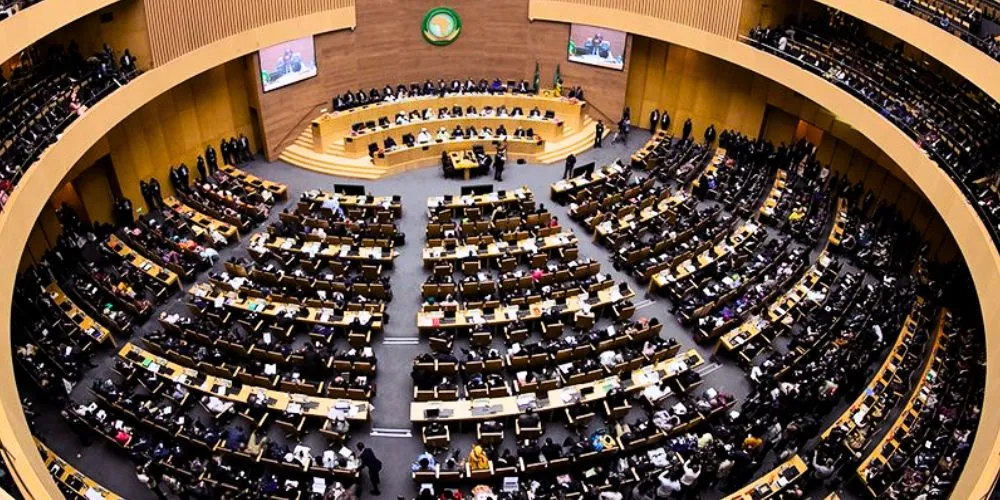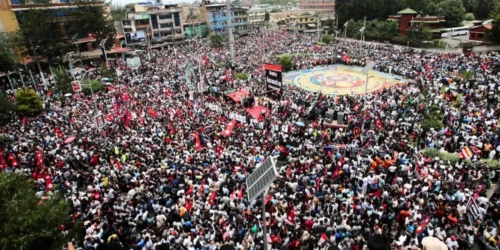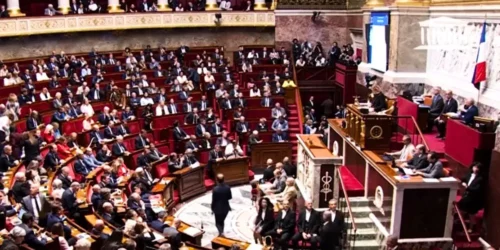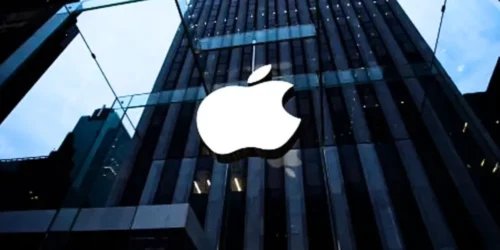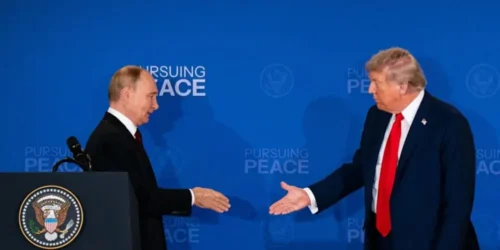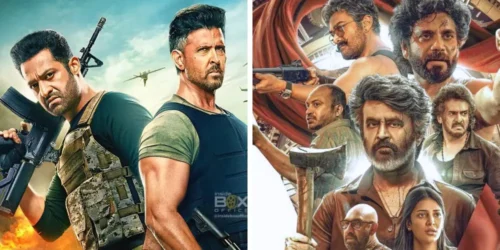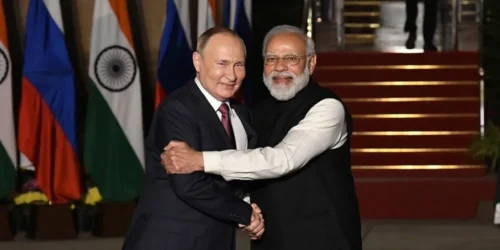Corruption in Africa is a story told in whispers and screams. It is whispered in the marketplaces of Lagos, where a small bribe is the price of doing business. It is screamed in the protest chants of young people in the streets of Nairobi, demanding an end to the looting of their future. It is a story so pervasive, so deeply embedded in the political landscape of many nations, that it can feel like a law of nature, an inescapable part of the continent’s destiny.
This is a dangerous and deeply flawed narrative. To see corruption as an “African problem” is a lazy, neo-colonial caricature. Corruption is a human problem, a universal parasite that infects nations rich and poor, north and south. But the nature of the parasite, the way it latches onto the body politic and the specific damage it inflicts, is profoundly shaped by history, by the structure of the economy, and by the nature of the state itself.
This is a case study of that parasite in its most virulent and destructive form. We will journey into the heart of African kleptocracy, dissecting its mechanics and tracing its devastating human cost. We will not offer a simplistic, continent-sweeping generalization. Instead, we will focus our lens on a single, tragic, and revelatory case: the wholesale capture of the state of South Africa under the presidency of Jacob Zuma. The South African saga of “State Capture” is a terrifyingly complete textbook on how a liberation movement can curdle into a predatory elite, how democratic institutions can be systematically hollowed out, and how a nation’s resources can be plundered on an industrial scale.
This is not a story about abstract economics or political science. It is a story about stolen futures. It is a story of how the money meant for hospitals, for schools, for electricity, for the very promise of a better life after apartheid, was diverted into the pockets of a powerful few. But it is also a story of immense courage—of the whistleblowers, the journalists, and the judges who dared to stand up and fight back. To understand their battle is to understand one of the most critical struggles of the 21st century: the fight to reclaim the state for the people it is meant to serve.
The Anatomy of a Kleptocracy – Beyond the Brown Envelope
Before we descend into the specifics of the South African case, we must first build a clinical understanding of the specific form of corruption that has plagued so many post-colonial African states. This is not just about a minister taking a bribe in a brown envelope. This is about a system designed for plunder.
The “Vampire State”: A Legacy of Extraction
The roots of modern African corruption lie deep in the soil of colonialism. The colonial state was not designed to serve the people it governed. It was an instrument of extraction. Its sole purpose was to efficiently extract the natural resources of the colony—the rubber, the cocoa, the diamonds, the oil—and ship them back to the European metropole. It built roads and railways not to connect its people, but to connect the mine or the plantation to the port. The institutions it created—the police, the courts, the civil service—were designed for control, not for public service.
When independence came in the mid-20th century, many new African leaders inherited the keys to this extractive machine. They did not dismantle it; they simply took control of it. The flow of resources was redirected, not from the colony to the metropole, but from the state to the new ruling elite. The Ghanaian economist George Ayittey famously described this as the “vampire state”—a government that preys on its people, sucking the economic lifeblood out of the nation.
The Curse of the “Big Man”: Personal Rule and the Neo-Patrimonial State
This system was often perfected under the model of “Big Man” rule. In a neo-patrimonial state, the line between the public treasury and the personal bank account of the ruler completely dissolves. The state is not an impersonal set of institutions; it is the personal property of the president and his network of loyal cronies.
The “Big Man” uses the resources of the state to maintain his power. He distributes jobs, contracts, and cash to his family, his ethnic group, and his political allies to ensure their loyalty. This is not just about personal greed; it is a system of political survival. In this system, loyalty is valued far more than competence. The national airline, the state oil company, and the ministry of finance—all become fiefdoms to be handed out to loyal followers. The state becomes a vast patronage machine, and the public good is a distant, secondary concern. The long reigns of kleptocrats like Mobutu Sese Seko in Zaire (now the DRC), who looted his nation of billions while his people starved, are the ultimate, tragic expression of this model.
State Capture: The Outsourcing of Plunder
The South African case represents a modern, more sophisticated evolution of this model. State capture is what happens when private actors—a wealthy family, a powerful corporation—effectively buy a controlling interest in the state itself. They do not need to be the “Big Man” themselves. They just need to control him.
In a state capture scenario, powerful private interests work to place their chosen politician in power. They then use their influence over him to systematically infiltrate and repurpose the key institutions of the state for their benefit. They ensure their allies are appointed as ministers, as heads of state-owned enterprises (SOEs), and even as police chiefs and prosecutors.
The goal is not just to win a single government contract. The goal is to control the entire procurement system. They can dictate the terms of the deal, ensure no one else can bid, and loot the SOEs from the inside. The state has been captured. Its sovereign functions—to tax, to regulate, to prosecute—have been effectively outsourced to a private syndicate. This is precisely what happened when the Gupta family met Jacob Zuma.
The Shadow Presidency – The Capture of South Africa
When Nelson Mandela walked free from prison in 1990, it was a moment of almost unbelievable hope. South Africa, the world’s pariah, was on a path to a multi-racial democracy. The African National Congress (ANC), Mandela’s liberation movement, was poised to inherit the state and wield its power to undo the deep, structural injustices of apartheid. For two decades, under Mandela and his successor, Thabo Mbeki, South Africa made remarkable progress, even as it wrestled with immense challenges.
Then, in 2009, Jacob Zuma became president. And the hopeful story took a dark and dangerous turn.
Zuma was a man of immense charm and political skill, a populist who positioned himself as a champion of the common man. He was also a man trailed by a long shadow of corruption allegations. His rise to power was aided by a powerful and ambitious family who had recently emigrated from India: the Guptas.
The Gupta family—three brothers, Ajay, Atul, and Rajesh—were not part of the old, white business establishment. They were outsiders who saw, in the chaotic world of post-apartheid South Africa, a massive opportunity. They befriended Jacob Zuma long before he was president, cultivating a close relationship with him and his family. They hired his children for lucrative positions in their expanding business empire. They paid for lavish family weddings. They built a relationship of deep, personal, and financial entanglement.
When Zuma became president, their investment paid off spectacularly. The Gupta family, with Zuma’s blessing, began the systematic capture of the South African state. Their modus operandi was brazen and devastatingly effective.
Capture the State-Owned Enterprises (SOEs)
South Africa’s SOEs are the crown jewels of its economy. They include Eskom, the massive national power utility; Transnet, the state-owned rail and port operator; and South African Airways. These are colossal entities with multi-billion-dollar annual budgets for procurement and infrastructure projects. For the Guptas, they were pigs ripe for slaughter.
Their method was simple. They would use their influence with President Zuma to ensure that pliant, Gupta-friendly individuals were appointed to the boards and executive positions of these SOEs. Once their people were in place, the looting could begin.
- At Eskom: The Gupta-controlled board pushed through a series of corrupt deals. They forced the sale of a productive coal mine owned by a multinational company (Glencore) to a Gupta-front company called Tegeta. Tegeta had no money to buy the mine, so the Eskom board approved a massive, illegal prepayment of over R600 million (about $40 million) to Tegeta, which Tegeta then used as a down payment to buy the mine. Once they owned the mine, they sold low-quality coal back to Eskom at vastly inflated prices. Eskom, the company that was supposed to power the nation’s economy, was being systematically bled dry.
- At Transnet: The Gupta network orchestrated a massive kickback scheme related to the purchase of over 1,000 new locomotives. A Chinese manufacturer was awarded the contract, and a significant portion of the deal’s value—billions of rand—was funneled back as “consultancy fees” to a network of Gupta-linked shell companies in Dubai and Hong Kong.
Capture the Cabinet
To protect their operations, the Guptas needed to control not just the SOEs but the government ministries that oversaw them. This led to the most infamous and audacious aspect of the state capture saga: the Guptas were effectively appointing cabinet ministers.
The story was broken by a brave deputy finance minister named Mcebisi Jonas. He publicly revealed that the Gupta brothers had summoned him to their lavish family compound in Saxonwold, Johannesburg. In that meeting, they offered him the top job—Minister of Finance—along with a cash bribe of R600 million if he would agree to work with them and do their bidding. Jonas refused. When he reported the incident to President Zuma, Zuma was non-committal. A short time later, the respected, independent finance minister, Nhlanhla Nene, was abruptly fired by Zuma and replaced with a compliant, unknown backbencher. The message was clear: the finance ministry was now under Gupta control. The South African rand crashed on the news.
Neutralize the Immune System
To ensure their looting could continue unimpeded, the syndicate had to neutralize the state’s immune system: the law enforcement and prosecutorial agencies.
- The National Prosecuting Authority (NPA): Zuma appointed a series of pliant, compromised individuals to head the NPA. These “captured” prosecutors shut down investigations into Zuma and his allies, ensuring that the powerful were immune from prosecution.
- The “Hawks”: An elite police investigative unit was systematically purged of its independent leaders and restaffed with Zuma loyalists.
- The South African Revenue Service (SARS): Once a world-class and fiercely independent tax agency, SARS was gutted. A new, compliant commissioner was installed, and a “rogue unit” narrative was manufactured to fire the agency’s top investigators.
The message to anyone who dared to investigate the shadow state was clear: you will be hounded, you will be fired, and you will be silenced. The thieves themselves had replaced the guards of the treasury.
The Body’s Fever – The Human Cost of a Captured State
The story of state capture is often told in the language of billions of rand, of complex financial flows and corporate intrigue. But the real cost is measured in human suffering. The bleeding of the elephant is felt in the daily lives of ordinary people.
The Era of “Load Shedding”: A Nation in the Dark
The most visceral consequence of the looting of Eskom was the collapse of the nation’s power grid. Riddled with corruption, incompetence, and a lack of maintenance, Eskom could no longer generate enough electricity to meet the country’s needs. This led to the implementation of “load shedding”—a system of planned, rolling blackouts across the country.
For millions of South Africans, load shedding became a daily reality. Homes would go dark for hours at a time. Businesses could not operate. Traffic lights would go out, causing chaos on the roads. Hospitals had to rely on backup generators, putting patients’ lives at risk. The economic cost was staggering, shaving billions off the country’s GDP. The psychological cost was even greater. It was a constant, tangible reminder that the state was failing in its most basic duty: to keep the lights on. It was a daily humiliation, a direct result of the billions that had been siphoned out of the utility by the capture syndicate.
The Decay of Public Services
The money stolen from Transnet, from the tax service, from countless other government departments was money that should have been spent on the people of South Africa. It was money for:
- Hospitals: Public hospitals, already underfunded, crumbled further. They lacked basic medicines and equipment.
- Schools: Children in poor townships attended schools with collapsing infrastructure and a desperate lack of resources.
- Water and Sanitation: The promise of clean water and decent sanitation for all, a core promise of the post-apartheid government, remained unfulfilled for millions as infrastructure projects stalled or were looted.
The ultimate tragedy of state capture is this: it is a direct theft from the poor. It steals the resources meant to uplift the most vulnerable and redirects them to a politically connected elite. It entrenches the very inequalities that the liberation struggle was meant to overcome.
The Poisoning of the Body Politic
Perhaps the most enduring damage was to the nation’s soul. The revelations of state capture created a profound crisis of trust. The ANC, the party of Nelson Mandela, the party that had led the fight for freedom, was now seen by many as a corrupt, self-serving machine.
This created a deep and pervasive cynicism. The belief in the promise of democracy, in the idea of public service, was corroded. This cynicism is dangerous. It can lead to apathy, as people give up on the political process altogether. Or, it can curdle into a desperate rage, creating fertile ground for populist demagogues who promise to burn down the whole system. The capture of the state did not just steal money; it stole hope.
The Immune Response – Fighting Back Against the Shadow State
Just when it seemed the parasite had completely consumed its host, the body politic began to fight back. The story of the pushback against state capture in South Africa is a powerful testament to the resilience of democratic institutions and the courage of individuals. The immune response came from three critical fronts.
The Whistleblowers and the Press – Speaking Truth to Power
The entire state capture house of cards was brought down by the courage of individuals who dared to speak out, often at great personal risk. People like Mcebisi Jonas, the deputy finance minister, who refused the bribe, and Vytjie Mentor, an ANC MP who also blew the whistle on Gupta influence. These were the internal antibodies.
Their stories were then amplified and meticulously investigated by South Africa’s fiercely independent press. A group of investigative journalists obtained a massive trove of leaked emails from inside the Gupta empire—the “GuptaLeaks.” This was the smoking gun. The emails provided an irrefutable, day-by-day account of the syndicate’s operations, detailing their control over ministers, their manipulation of contracts, and their vast network of offshore accounts. Newspapers like the Daily Maverick and amaBhungane published hundreds of stories, laying the entire conspiracy bare for the public to see.
In an environment where the official law enforcement agencies had been captured, investigative journalism became the de facto prosecutorial body, trying the case in the court of public opinion.
The Judiciary – The Last Line of Defense
While Zuma and the Guptas had successfully captured the prosecutorial authority and the police, they could not fully capture the judiciary. South Africa’s post-apartheid constitution had created a powerful and independent Constitutional Court. This court became the ultimate backstop, the last line of defense for the rule of law.
Time and again, civil society organizations would take the government to court over irrational decisions or corrupt appointments. And time and again, the courts would rule against President Zuma, holding the line against the executive’s overreach. It was the Public Protector (a constitutionally mandated ombudsman), Thuli Madonsela, whose damning 2016 report, “State of Capture,” officially detailed the extent of the problem and recommended the establishment of a judicial commission of inquiry.
The judiciary acted as the firewall, protecting the constitution when all other institutions had been compromised.
The People and the Party – The Power of Public Pressure
The constant drip of revelations from the media and the string of court defeats created immense public pressure. Mass protests, led by civil society groups and opposition parties, took to the streets. But the most important pressure came from within the ruling ANC itself.
The party was deeply divided. A reformist faction, horrified by the damage Zuma was inflicting on the party’s reputation and the country’s economy, began to organize against him. The struggle for the soul of the ANC came to a head at the party’s elective conference in December 2017. In a knife-edge vote, Zuma’s chosen successor was defeated, and Cyril Ramaphosa, a former union leader and businessman who had campaigned on an anti-corruption platform, was elected as the new leader of the ANC.
A few months later, in February 2018, the ANC, under Ramaphosa’s leadership, formally “recalled” Jacob Zuma, forcing him to resign from the presidency in disgrace. The head of the capture syndicate had been removed. The fever, it seemed, had broken.
Conclusion: The Long Road to Recovery
The removal of Jacob Zuma and the flight of the Gupta brothers (who are now international fugitives) was not the end of the story. It was the beginning of a long, painful, and uncertain recovery. The legacy of state capture is a nation with deeply wounded institutions, a shattered economy, and a profound social mistrust.
The Zondo Commission, the judicial inquiry established to investigate state capture, has spent years meticulously documenting the full extent of the rot, producing a multi-volume report that reads like a horror novel. The new leadership of the National Prosecuting Authority is now faced with the monumental task of turning these findings into successful criminal prosecutions. This process will take many more years.
The South African case study is a stark and terrifying warning. It shows how quickly and completely a state can be repurposed for private plunder, even in a country with a celebrated constitution and a recent history of democratic triumph. It demonstrates that the greatest threat to many African nations is not external aggression, but the enemy within—the predatory elite that hollows out the state from the inside.
But it is also a story of hope. It is a powerful reminder that even in the darkest of times, institutions can hold, journalists can expose, and citizens can resist. It shows that the fight against corruption is not a single event, but a constant, grinding struggle waged by a coalition of brave individuals and resilient institutions.
The bleeding of the elephant has been partially staunched. The long and difficult work of healing the wounds, of rebuilding the state’s immune system, and of restoring the people’s faith now begins. The future of South Africa, and many other nations across the continent battling the same parasite, will depend on the success of that effort. It is a battle for the very idea of a government that serves, a state that builds, and a future that is not for sale.

